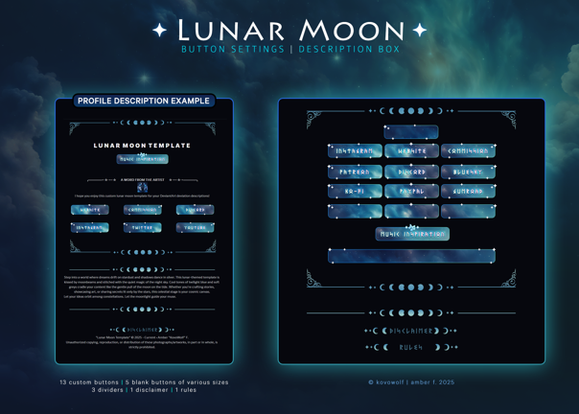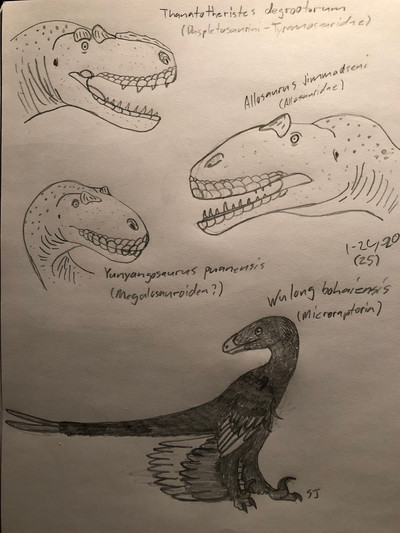HOME | DD
 Saberrex — Tyrannosaurs: Australotyrannidae (Cont.) Part 2
by-nc-sa
Saberrex — Tyrannosaurs: Australotyrannidae (Cont.) Part 2
by-nc-sa

#dinosaur #tyrannosaur #tyrannosauroid #tyrannosaurs #tyrannosauroids #dinosaurs #tyrannosauroidea #speculativeevolution #dinosaursofthepresent
Published: 2021-10-01 18:38:13 +0000 UTC; Views: 12300; Favourites: 90; Downloads: 6
Redirect to original
Description
The Australotyrannidae are perhaps the most diverse group of tyrannosauroids in the world. A far cry from the giants of The Americas, Africa, and Eurasia, they are extremely well adapted to a number of niches, habitats and diets thanks to the varying size between them. While megaraptora may be the dominant predators of Australia, the loss of the continent's abelisaurids and the smaller, unenlagiine dromaeosaurs that were once native to the continent during the Miocene Epoch as a result of climate changes 19 million years ago has greatly allowed them to expand their roles as small and midsize predators of the outback. With sharp, three-fingered talons on hands sporting convergently evolved folding wrists similar to those of maniraptorans and bone-crushing jaws, they serve as not only predators, but effective scavengers that can eat all but the most putrid of corpses that other predators leave behind. Shown here is a list of genera of Australotyrannids native to Australia, continuing the list of theropods within the family:Australotyrannus (Whippersnapper): The most widespread of the Australotyrannidae, Australotyrannus is native to most of Australia, as well as Tasmania and New Zealand, the latter two islands being the only place where this animal rules as the apex predator. The island species are larger than their counterparts on the Australian mainland due to the lack of large Megaraptorans to compete with. in mainland Australia, Australotyrannus can reach upwards of 20 feet long and weigh over 1,000 pounds. In New Zealand and Tasmania, the two island species can reach more than 25 feet long and weigh upwards of 1,700 pounds. As such, they can be classified as the largest of the Australotyrannid family living in Australia, and the second-largest Australotyrannid in the world, surpassed only in size by the Japanese Honshutyrannus. Monagamous by nature, the these animals generally live in mated pairs, raising large clutches of young (sometimes up to 30 at a time). The father is responsible for egg incubation, while the female, who is larger, generally does most of the hunting during the breeding season. While they are generally pursuit predators that chase iguanodontians, hypsilophodonts, large flightless birds such as ratites, and small sauropods, they are also superb scavengers that readily clean up megaraptoran kills and other carrion they find. They are also fond of raiding nests, and do not hesitate to steal eggs from various animals living in their territories.
Australotitanis (Southern crowned dragon): A 10-foot, 200-pound australotyrannid that haunts the wetlands of Australia, such as the billabongs and floodplains, Austalotitanis is a small predator that preys on small dinosaurs, amphibians, turtles, and birds, and it does not hesitate to eat the young of crocodiles or catch the occasional fish. Adorned with handsome iridescent feathers on its neck, this theropod is known for its flashy mating displays, which are both simple and elegant. Though quite distantly related to the Lyretyrants and Bowertyrants (Menuratyrannus and Sericulotyrannus, respectively), this animal similarly presents potential mates with captured prey as a testament to the male’s hunting prowess. The female alone raises the young, which can number as many as ten offspring, but the male will defend them and other females and chicks in his territory, due to how his range encompasses that of the females he takes as mates.
Australorientalisaurus (Bushwacker): The second-largest of the Australotyrannidae, this large theropod can grow to 18 feet and weight 900 pounds, and is the most social of the group, living in large clans. Preying on iguanodonts, hypsilophodonts and all manner of small or midsize dinosaurs, reptiles, birds, and other creatures, it roams widely across the various regions of the outback including the red center, and is capable of surviving off the moisture in the blood of its prey. Living in packs of up to 20, bushwhackers follow alpha pairs that serve as the primary breeders, with the other pack members serving as caretakers for the chicks (though mating and breeding is allowed amongst other pack-mates of equal rank). Uniquely, this tyrannosaur will also readily adopt orphaned infants of its own kind into its pack when it comes across them, and it is the only tyrannosauroid known to practice this technique. Australorientalisaurus is one of the few predators that readily will attack the strange, hypercarnivorous iguanodontian known as Dryodon as prey, and packs readily challenge megaraptorans for kills when they have strength in numbers.
Related content
Comments: 5

👍: 0 ⏩: 1

👍: 0 ⏩: 1

👍: 0 ⏩: 0

























